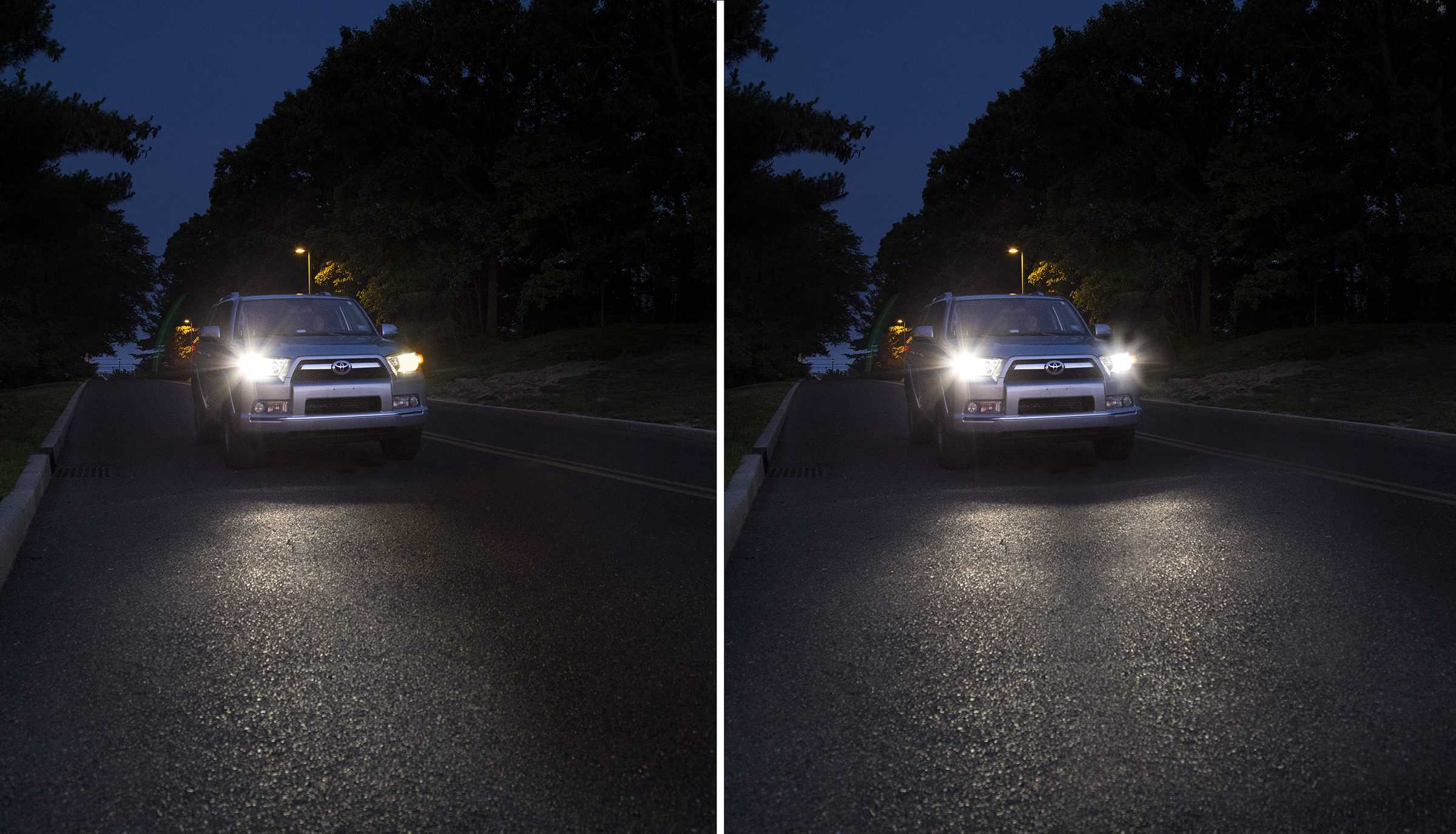

Changing both headlight bulbs ensures a properly lit road ahead and the full benefit of the vehicle’s headlights as originally intended by the carmaker.
Changing both headlight bulbs ensures a properly lit road ahead and the full benefit of the vehicle’s headlights as originally intended by the carmaker.
Farmington Hills, MI… The Philips Lighting Safety Campaign, launched by Lumileds, LLC, is a public service aimed at encouraging service technicians and vehicle owners to change headlight bulbs in pairs, whenever they need to replace a bulb due to damage, failure, or when one of the bulbs starts to dim. Headlight bulbs tend to deteriorate and lose effectiveness after a period from 2-3 years. Typically, motorists only replace the bulb that has burned out or is failing. This is not advisable because, replacing just one failed bulb can result in an unbalanced or unpredictable headlight beam and potentially present a safety risk.
From the driver’s perspective, the road ahead will not be properly lit and the driver will not get the full benefit of the vehicle’s headlights as the carmaker originally intended. From the oncoming driver’s perspective, an uneven headlamp beam can create an equally risky safety issue.
Key automotive components typically replaced in pairs
The call to replace important auto parts in pairs in not a new concept. Automotive service professionals, technicians, and driving safety advocates, alike, are constantly recommending that tires, brakes, shocks, and wiper blades should be replaced in pairs to make sure the vehicle is properly balanced and functioning safely. Lighting is no different and is even more important to driver safety. Philips new safety campaign, “Change in pairs” is built around the overall theme: “Don’t compromise on safety, change in pairs. 2 new headlamps are safer than 1.”
Why replace light bulbs when they get old?
According to Ann-Marie Hines, Sr. Marketing Manager, Lumileds, LLC, the answer is simple. Hines notes, “The filament in a headlight ages with use, time, and exposure to the elements. As a result it becomes fragile and starts to deteriorate, and this causes the light output to diminish. At the end of a typical service life, perhaps 2-3 years, headlight bulbs will likely be projecting a much shorter and less powerful beam light, than when they were new. From a driver’s point of view this is a critical safety concern.”
Increased service opportunities for shops and technicians
Because vehicle lighting is so critical to driver safety we are encouraging our professional customers to inspect customer vehicles when they are in for service and recommend the replacement of both headlight bulbs at the same time. In addition to the safety benefits, changing bulbs in pairs also makes good sense from an efficiency point of view. Vehicle owners will only have to go to the shop once for lighting maintenance. They also avoid having to deal with the other side of the vehicle at a later date and reduce the risk of the other headlight bulb going out while on the road.
Background:
Editor note: At night a typical driver’s visual acuity is naturally reduced by up to 70%. Statistics show that almost half of traffic fatalities happen at night and that much of the blame is on reduced driver vision. That’s why it is so important to make sure that headlamps are working properly so they can be as effective as possible.
Headlight maintenance is often overlooked, but properly maintained headlights can go a long way toward improving driver visibility at night. Motorists should check their headlights frequently to make sure they are functioning properly and effectively.
Safety campaign supported by multi-faceted marketing communications
The Philips Lighting Safety Campaign is being supported by a multi-faceted marketing communication campaign that is targeting both distribution and consumer channels. The campaign is using a strategic combination of print, digital, and behavioral media outlets to promote the safety initiative along with ongoing public relations and social media activities.
Lumileds, LLC is joining with its retail and commercial partners to develop and implement consumer promotions and in-store merchandising. A training program is also in place to educate lighting customers on the importance of replacing bulbs in pairs, building consumer loyalty with the Philips brand of products, and learning about the added benefits of upgrade lighting.
The ‘Change in Pairs’ initiative coupled with ‘Safety you can see’ is also detailed in the new Philips catalog, which features a complete glossary of lighting technology terms and phrases to help better educate both professionals and consumers.
To find out more: www.philips.com/chips or call 1-800-257-6054.